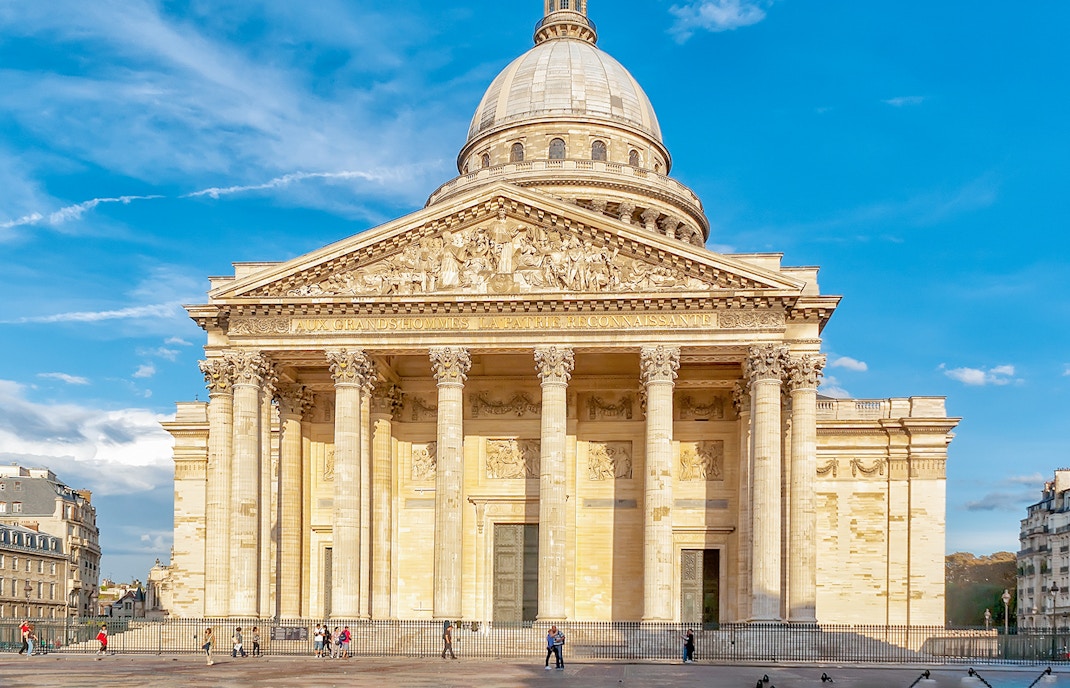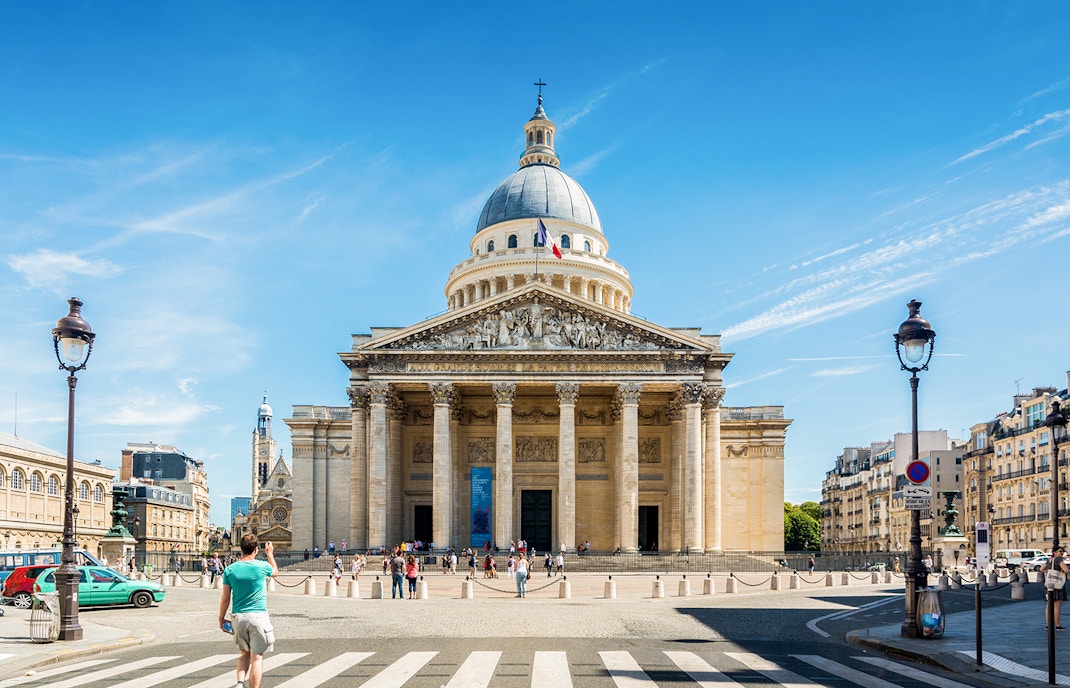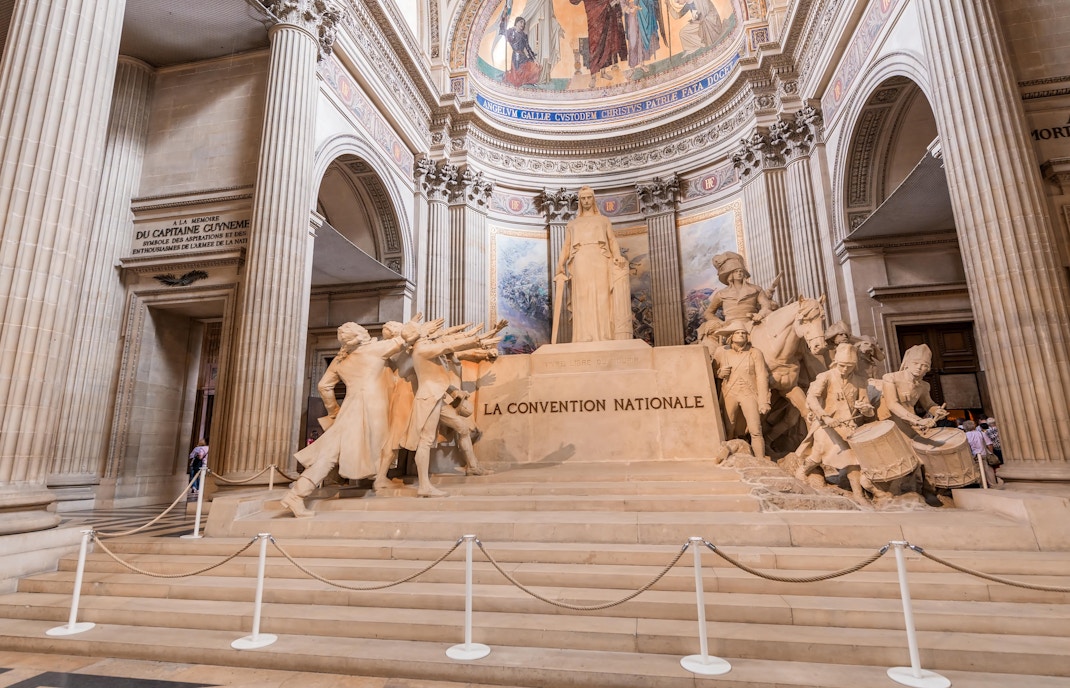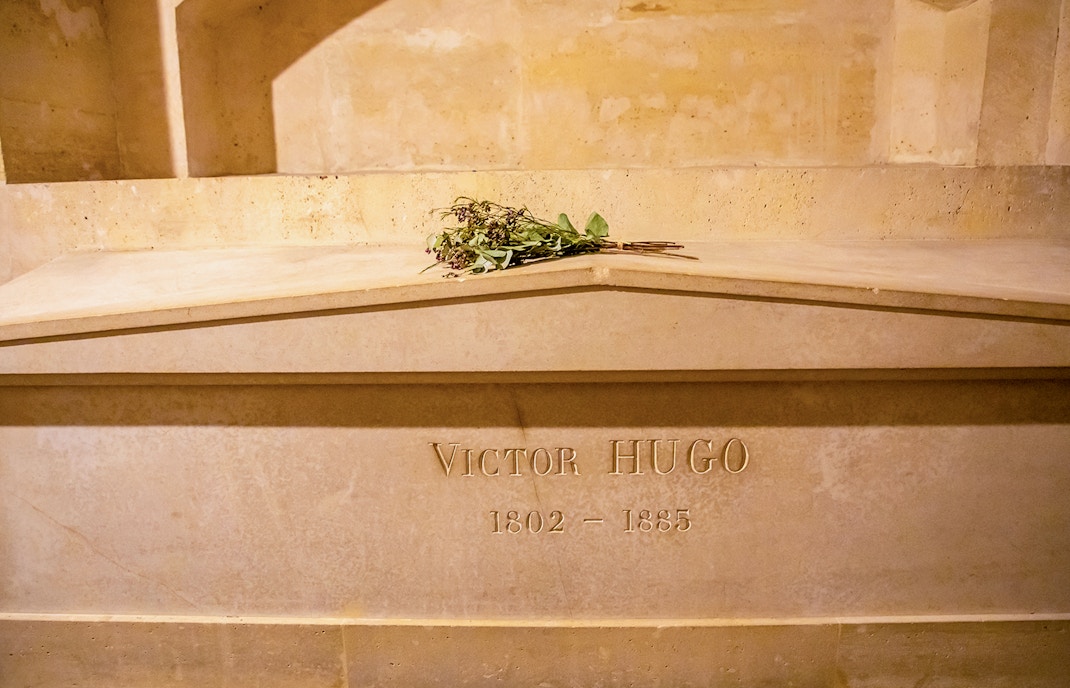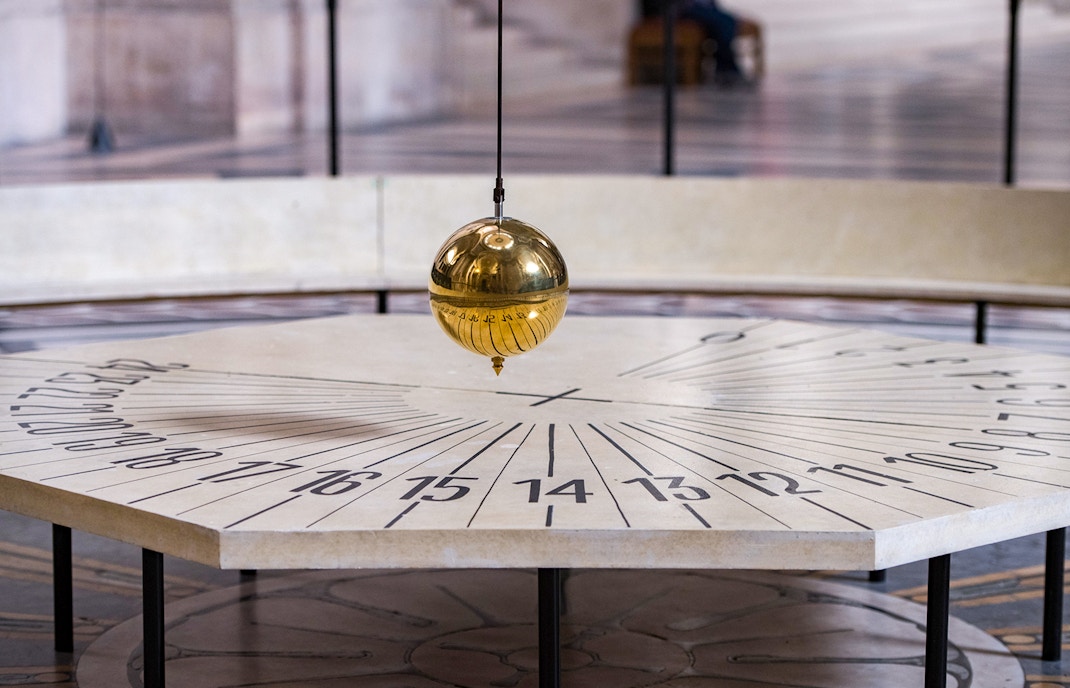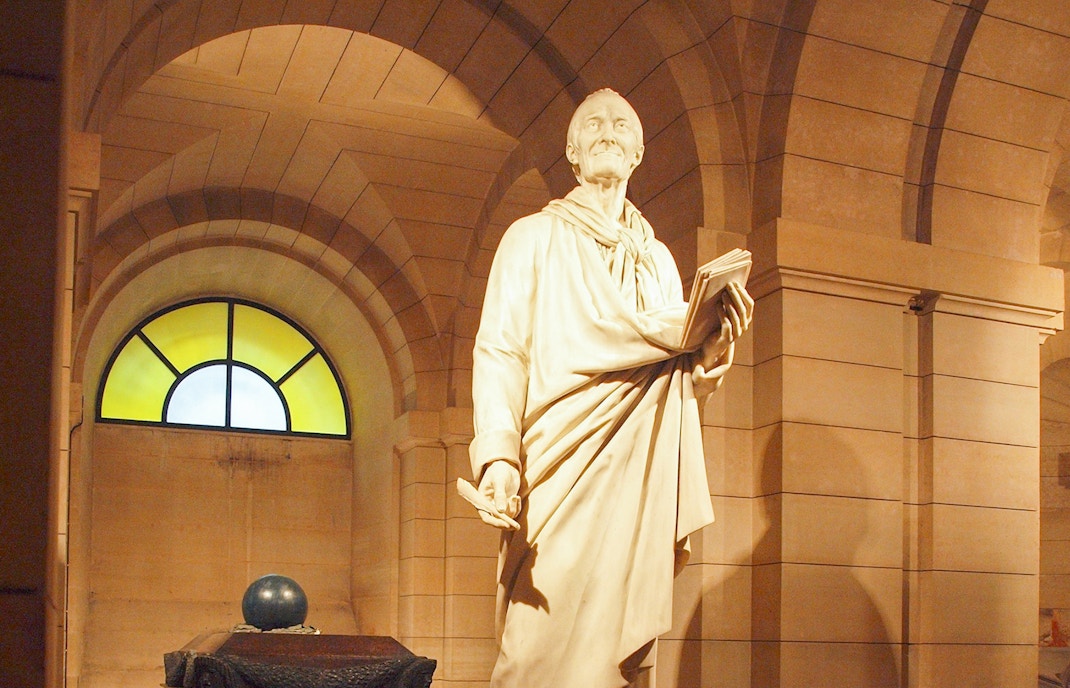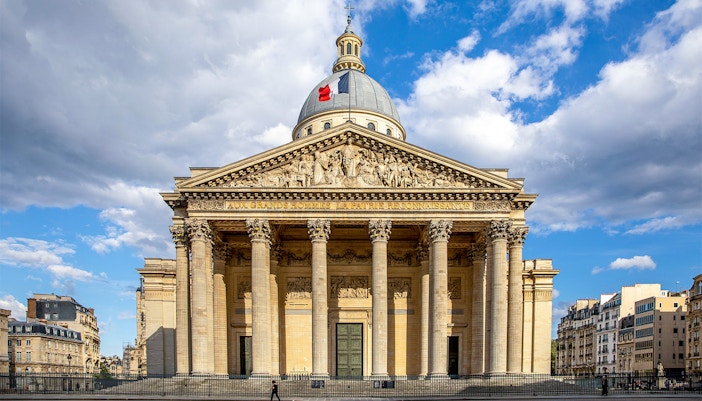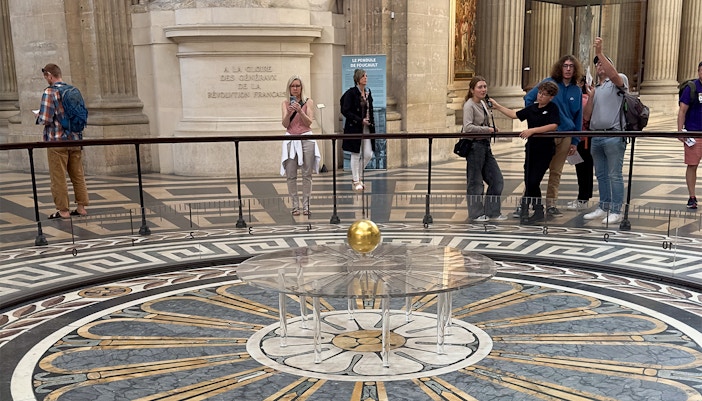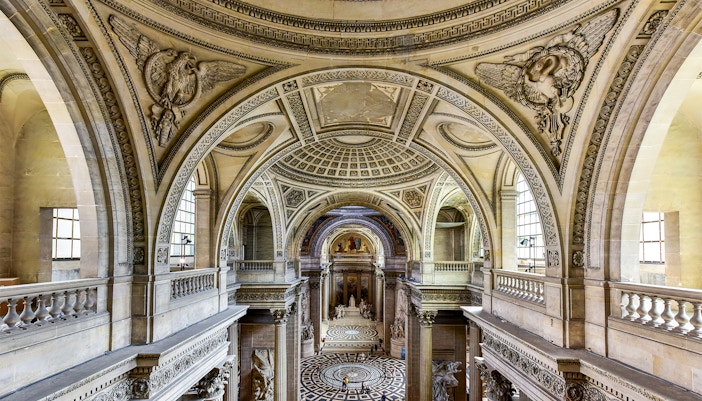1744–1755
The Panthéon’s story begins in 1744, when King Louis XV fell gravely ill. After his recovery, he vowed to build a grand church dedicated to Saint Geneviève, the patron saint of Paris, as a gesture of gratitude. In 1755, the king commissioned the renowned architect Jacques-Germain Soufflot to design the structure, envisioning a monumental building that would rival the great churches of Europe.
